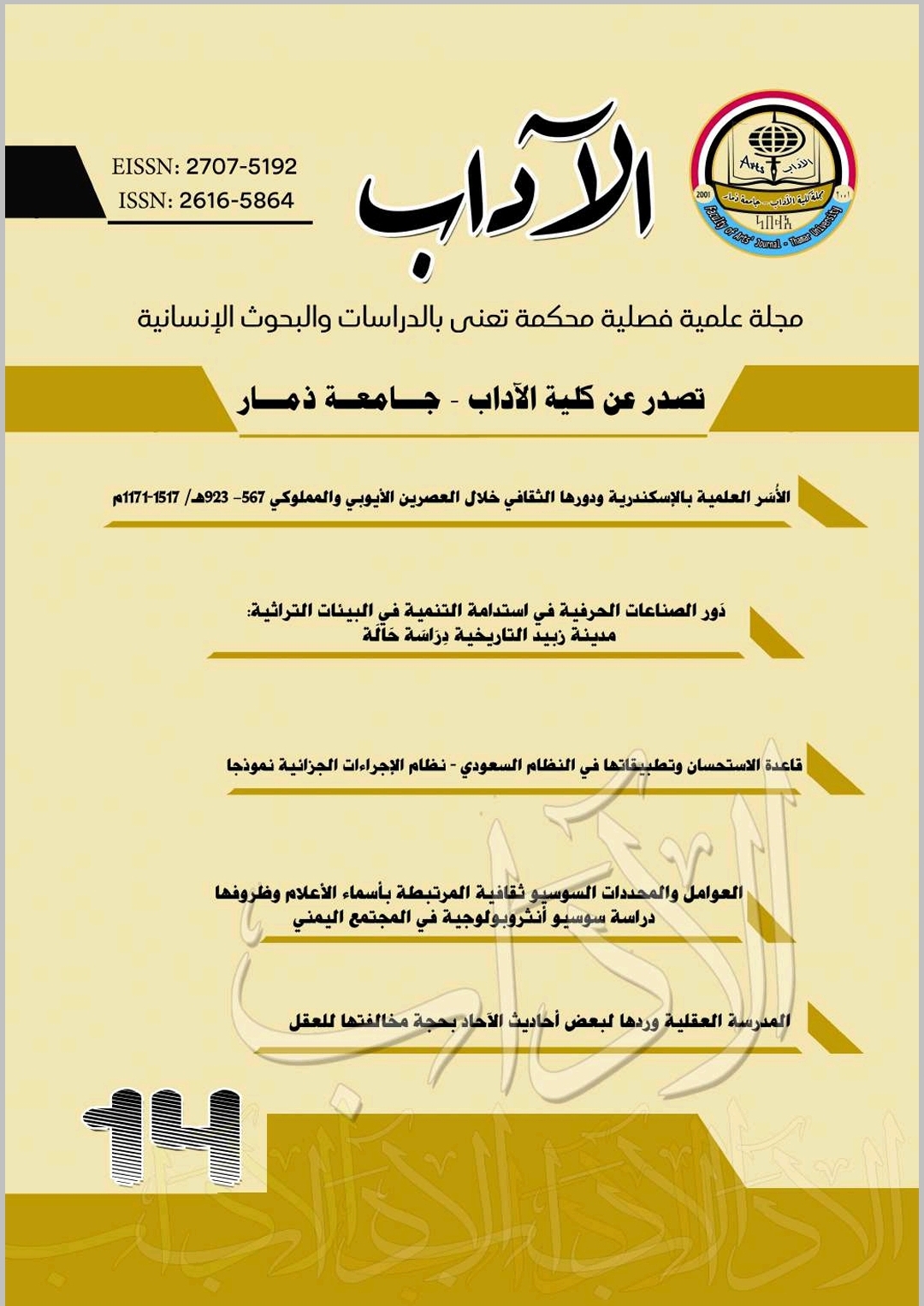Alexandria's Scientific Families and their Cultural Role during the Ayyubid and Mamluk Eras 567 - 923 AH/ 1171-1517 A.D
DOI:
https://doi.org/10.35696/.v1i14.639Keywords:
Families, Alexandria, Hadith science, Jurisprudence, Salafi, Maliki, Al-Shafi’iAbstract
This research deals with the scientific families in Alexandria and their cultural role during the Ayyubid and Mamluk era, whether families that originated in Alexandria such as the Ibn Auf family, or their settlement from inside the cities of Egypt such as the Bury family, and outside it from the countries of the Islamic world such as the Salafi family, and it became difficult to differentiate between these or that. We also talked about the factors that contributed to the prosperity of the scientific life of these families. We deeply investigated how the head of each family was keen to pass on his knowledge to those who came after him from his children and grandchildren, to the degree that we see families who inherited certain sciences such as: the science of hadith, and other Maliki jurisprudence, and a third Mathematics. There are families whose individuals are excited in more than one science, where we see one of them mastered for example: interpretation, literature, and language... until Alexandria became a scientific center from which the light of science emerges from most parts of the Islamic world.Downloads
Download data is not yet available.
Downloads
Published
2020-03-01
How to Cite
Elsisy, H. A. A. . (2020). Alexandria’s Scientific Families and their Cultural Role during the Ayyubid and Mamluk Eras 567 - 923 AH/ 1171-1517 A.D. Journal of Arts, 1(14), 65–100. https://doi.org/10.35696/.v1i14.639
Issue
Section
1
License
Copyright (c) 2021 هشام عطية أحمد السيسي (مؤلف)

This work is licensed under a Creative Commons Attribution 4.0 International License.
Copyright and Licensing
For all articles published in journal, copyright is retained by the authors. Articles are licensed under an open access Creative Commons CC BY 4.0 license, meaning that anyone may download and read the paper for free. In addition, the article may be reused and quoted provided that the original published version is cited. These conditions allow for maximum use and exposure of the work.



